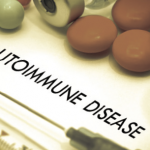Systemic lupus erythematosus (SLE) is a rare, complex disease. It affects multiple organs, and patients are at increased risk for cardiovascular events. Cardiovascular disease (CVD) is actually an important complication of SLE, and the incidence of atherosclerotic CVD is increased by up to 50-fold in patients with SLE.
Maria Wigren, PhD, postdoctoral fellow at Lund University in Lund, Sweden, and colleagues recently published a review of the pathogenesis of CVD complications in SLE in the Journal of Internal Medicine.1 In their paper, researchers explain that the pathogenic immune response that underlies SLE shares characteristics with the immune response that contributes to the development of atherosclerotic plaques. Similarities include impaired efferocytosis and skewed T cell activation.
Patients with SLE have abnormal T cells with altered activation thresholds and increased expression of co-stimulatory molecules, such as CD40 ligand. T cell activation depends on interactions between the T cell receptor and other molecules concentrated on lipid rafts. It is not yet clear what type of helper T cell plays the dominant role in the development of SLE. Regulatory T cells are believed to be protective, although the details of their role in SLE are not yet clear.
Atherosclerotic patients are characterized by a lack of tolerance to low-density lipoprotein (LDL) and other plaque antigens that is similar to the loss of tolerance to self-antigens seen in patients with SLE. Atherosclerosis develops when LDL aggregates on the arterial wall, becomes oxidized and triggers inflammation. Atherogenesis is also marked by endothelial dysfunction, which results from damaged endothelial cells that can no longer maintain the balance between vasodilation and vasoconstriction.
B cells are thought to have an important role in SLE. B cells and plasma cells produce autoantibodies, which are characteristic of SLE and can be used as a diagnostic marker of disease. The role of autoantibodies in atherosclerosis is not yet clear.
Neutrophils are abundant in circulation, and they have the ability to release peptides and reactive oxygen species with bactericidal properties when activated. They also extrude neutrophil extracellular traps composed of chromatin-containing fibers with bactericidal function. Recent evidence suggests that neutrophils are important in both atherogenesis and SLE.
Patients with SLE have activated monocytes and macrophages that express higher levels of co-stimulatory molecules, and an altered number and type of Fc gamma receptors. They also produce neopterin, which is a purine nucleotide that serves as a marker of macrophage activation. A high neopterin level is associated with SLE, as well as increased atherosclerosis.
Several cytokines are important in the pathology of both SLE and atherosclerosis. Patients with SLE have a distinct interferon (IFN) signature indicative of overexpression of type 1 IFN-regulated genes. The level of expression of these genes correlates with SLE disease activity.
Type 1 IFNs are also associated with increased thrombus formation. Interleukin-6 (IL-6) has also been shown to have an important role in SLE pathogenesis. Mouse studies have suggested that IL-6 has both protective and disease-promoting functions in atherosclerosis. IL-10 is believed to have dual roles in SLE—working as an antiinflammatory, and at the same time promoting the proliferation and differentiation of B cells. Although IL-10 appears to be largely disease promoting in SLE, it seems to be largely protective in CVD.
The authors conclude their paper with the hope that such an analysis may aid in the discovery of novel targets for intervention. Specifically, novel, immune-based therapies for CVD may not only be effective in the prevention of CVD, but may also act as immunomodulators for patients with SLE, the authors suggest. (posted 3/20/15)
Lara C. Pullen, PhD, is a medical writer based in the Chicago area.
Reference
